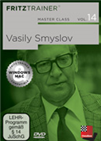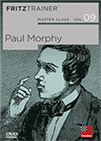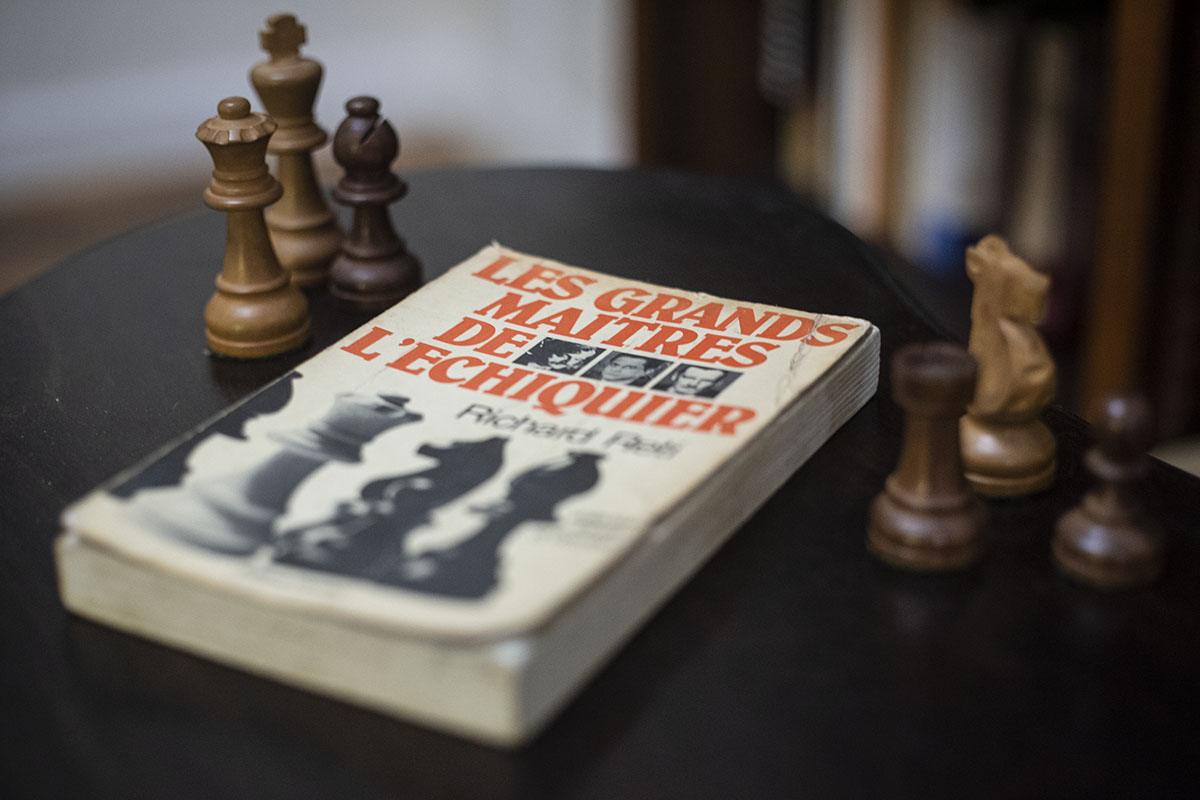In 1987 I was just learning to play chess in Paris, and after trying to figure out the game through the chess columns in the spectacular magazine Jeux et Stratégie, and a copy of Europe Échecs, I discovered there was a store that was deeply specialized in chess: the venerable 'Librairie St. Germain'.
On the ground floor one could find a wide array of games and books, dedicated to roleplaying games, backgammon, Go, and many others, but the real magic took place in the floor below, a generous basement transformed into a small chess mecca. With an assortment of dedicated chess machines and chess boards and pieces, it also contained walls of chess books from around the world. It lived and breathed chess through the impassioned manager, André Frisch.

André Frisch's love of chess was infectious and was the driving force of the dedicated chess area. He was a great friend, and I was deeply saddened to hear of his passing away in 2017.
 Smyslov cultivated a clear positional style and even in sharp tactical positions often relied more on his intuition than on concrete calculation of variations. Let our authors introduce you into the world of Vasily Smyslov.
Smyslov cultivated a clear positional style and even in sharp tactical positions often relied more on his intuition than on concrete calculation of variations. Let our authors introduce you into the world of Vasily Smyslov.Staring at the bewildering rows and rows of books covering topics I could barely understand, he came to my succor and suggested a recent French edition of Richard Reti's masterpiece: "Masters of the Chessboard". It was the product of a collaboration between the store itself and the book publisher Éditions Garnier.

The translation was by Franck Lohéac-Ammoun, and it must be said he did a great job.
This book was to have an immeasurable impact on me as a player and as a lover of the game, and the recommendation was perfect. The sheer ambition of the text and its concept is not only staggering but inspiring, and what is more, it managed to be an ideal introduction to the world of chess to a beginner.
The book
Trying to summarize the book is a challenge because of the breadth of its scope. Reti's idea was to teach chess through its evolution, and teach that evolution through the players who drove it. Each chapter starts with a great player, and we are given a short biography of who these players are and what their most outstanding contribution to the game was. Thus the book starts with the great Adolph Anderssen, who broke onto the international stage by winning the first major tournament, London 1851.
Anderssen's most conspicuous strength lay in his vast imagination and tactical acumen, and Reti then shows this off in a set of games to teach this. But he first reinforces the scientific aspect of chess:
"One must not think that chess combinations are the sole province of talent, and cannot be learned. (...) The more combinations one has seen, the easier it becomes to find them ourselves."
 Learn about one of the greatest geniuses in the history of chess! Paul Morphy's career (1837-1884) lasted only a few years and yet he managed to defeat the best chess players of his time.
Learn about one of the greatest geniuses in the history of chess! Paul Morphy's career (1837-1884) lasted only a few years and yet he managed to defeat the best chess players of his time.Each game is annotated in such a way as to share the core tactics in commentary, nothing more than a couple of moves deep, but impart basic ideas of the openings, and endless nuggets of wisdom that apply today and would be worthy showcases on one's wall.
"The player who is learning as well as the experienced player, will vastly improve their game by seeking to approach each opening according to its base idea"
Or
"There is more chess truth in ideas than in variations."
The next champion presented is Paul Morphy, and after a quick biography, we are shown how he combined superior positional play with his deeper understanding of the importance of development in open games. Naturally, we are entreated to several of his famous wins, but the analysis is focused on the lesson of the day, and whenever possible, he highlights the mistakes in the handling of the opening from a development point of view.
When Steinitz is reached in the following chapter, Reti is not content to point out the many positional contributions by the great thinker, such as the power of the bishop pair over knight and bishop, he endeavors to demonstrate them to us in Steinitz's games.

In this game against Englisch above, Steinitz gives a masterclass in exploiting the advantage of the bishop pair.
By the end of this great work, the budding student will have been given an introduction to the giants who helped develop the game as we know it today, the key ideas that drive the game, the wide assortment of openings in use in his day and their basic concepts, and of course a hugely entertaining games collection.
Afterword
35 years later, this is a chess book that I have brought with me through three continents and endless moves. Though a little worse for the wear, and my chess no longer that of a neophyte, it is a prized possession I have shared with friends, masters and beginners alike.

It has a permanent place in my library, and is always a pleasure to peruse. I cannot recommend it enough.
Links



























